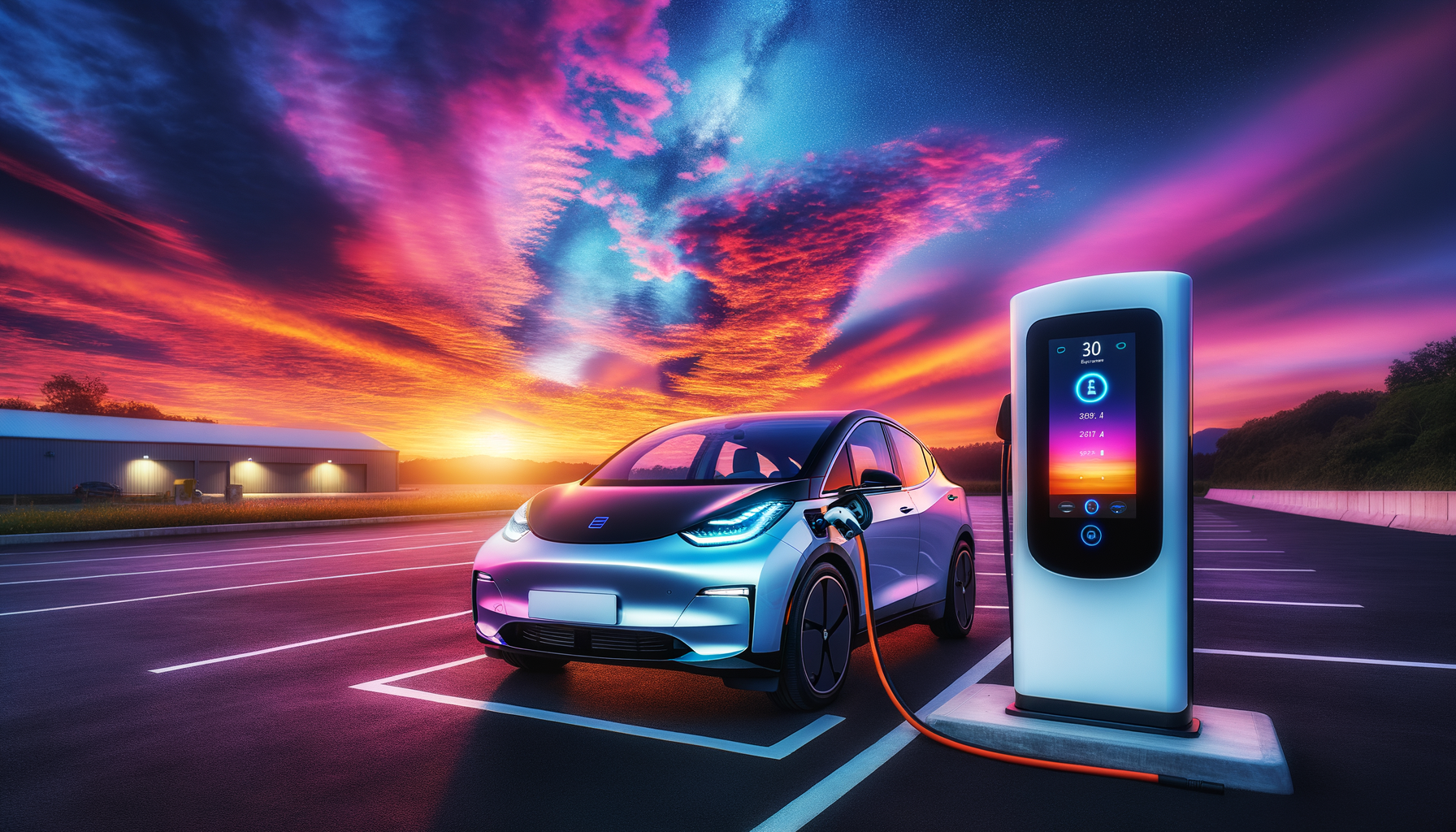Understanding the Cost of Supercharging: Maximizing Your EV's Efficiency

Updated 4 months ago
Understanding the Cost of Supercharging: Maximizing Your EV's Efficiency
Electric vehicle (EV) ownership is often lauded for its environmental benefits and potential cost savings on fuel. Yet, one critical aspect that EV owners must consider is the cost of charging the vehicle, particularly at supercharger stations. As the adoption of electric vehicles continues to rise, understanding these costs becomes crucial for consumers looking to make informed decisions about their transportation expenses.
Supercharger Costs: What You Need to Know
Superchargers, commonly known for their ultra-fast charging capabilities, are an essential part of long-distance EV travel. They allow drivers to quickly boost their battery levels, minimizing downtime during trips. But convenience comes at a price.
Charging costs at supercharger stations vary depending on a number of factors, including location, electricity rates, and the make and model of your EV. For Tesla owners, the cost of using a supercharger can range from $25 to $35 to achieve a full charge. Prices can be billed per kilowatt-hour (kWh) or per minute, depending on local regulations and the charging station's policies.
At-Home Charging vs. Supercharging
While superchargers offer speed and convenience, at-home charging is the economical champion. Charging a Tesla Model 3 from 0% to 100% at home can cost as little as $7, based on North Dakota's low electricity rates. However, in states with higher electricity costs, that price can climb to $40 or more. In general, charging your EV at home is less expensive and kinder to your battery's longevity compared to frequent supercharging.
It is also worth noting that the efficiency of electric vehicles plays a pivotal role. Electric motors can convert 87 to 91 percent of electrical energy into motion, as opposed to gas vehicles, which convert only 16 to 25 percent. Consequently, EVs offer significant savings over the long run.
Calculating The True Cost of Supercharger Use
To put things into perspective, consider the annual mileage average of 13,500 miles. If a Tesla owner only uses superchargers, the annual cost of powering the vehicle may range from $810 to $2,430, depending on the model and the specific supercharger's pricing. Contrast this with the potential savings from primarily charging at home, or using a mix of both methods.
To tailor these estimates to your unique situation, take advantage of online calculators and apps like PlugShare, which can help you find the most cost-effective charging stations and plan your routes accordingly.
Tesla Supercharger Cost Analysis Table
| Tesla Model | Cost of Supercharger Full Charge | Annual Cost (13,500 miles) |
|---|---|---|
| Model 3 Long Range AWD | $23 - $46 | $810 - $1,755 |
| Model S Plaid | $29 - $58 | $945 - $2,295 |
| Model Y Performance | $23 - $46 | $1,080 - $2,025 |
| Model X Plaid | $29 - $58 | $1,215 - $2,430 |
Promotions and Offers to Consider
Occasionally, Tesla has offered promotions such as 1,000 miles of free supercharging or free supercharging for a year to entice new buyers. Some older models are even eligible for lifetime free supercharging. While these deals have become more scarce, they may influence the cost benefits depending on the timing of your purchase.
The Cheapest Way to Charge a Tesla: Solar Power
One of the most cost-effective methods for charging your EV is through solar power. By installing solar panels, you can charge your vehicle for as little as $0.11 per kWh over the lifespan of the solar system, in comparison with the projected average grid electricity cost of $0.29 per kWh.
Using solar panels not only reduces charging costs but also increases the sustainability of EV ownership. While the initial investment is significant, solar installations are supported by various federal and state incentives that can drastically offset the upfront costs.
Maximizing Savings and Efficiency
Here are a few strategies to consider when looking to maximize savings while using a supercharger:
- Plan Your Charging: Utilize apps that map out the most cost-effective charging stations along your route.
- Monitor Promotions: Keep an eye on Tesla's promotions for free or discounted supercharging.
- Be Idle-Wise: Avoid idle fees at busy supercharger stations by moving your vehicle promptly after charging.
- Use Off-Peak Hours: Charging at home during off-peak times can further reduce costs.
The Future of EV Charging Costs
As EV technology evolves and the infrastructure grows, supercharger costs may become more competitive. Additionally, innovations in battery technology and renewable energy integration are expected to drive down overall charging expenses.
For now, understanding and strategically managing supercharger costs will play a vital role in the economics of EV ownership. By staying informed and using available tools and resources, EV owners can ensure they are charging their vehicles in the most cost-effective manner.
In conclusion, while supercharging provides rapid power replenishment for EVs, it also incurs a higher cost than at-home charging methods. EV owners should consider their driving habits, access to charging infrastructure, and financial incentives when determining the most efficient way to power their vehicle. By leveraging tools like charging calculators and apps, adopting smart charging strategies, and considering renewable energy options like solar power, you can enjoy the benefits of EV ownership without incurring exorbitant charging costs.




